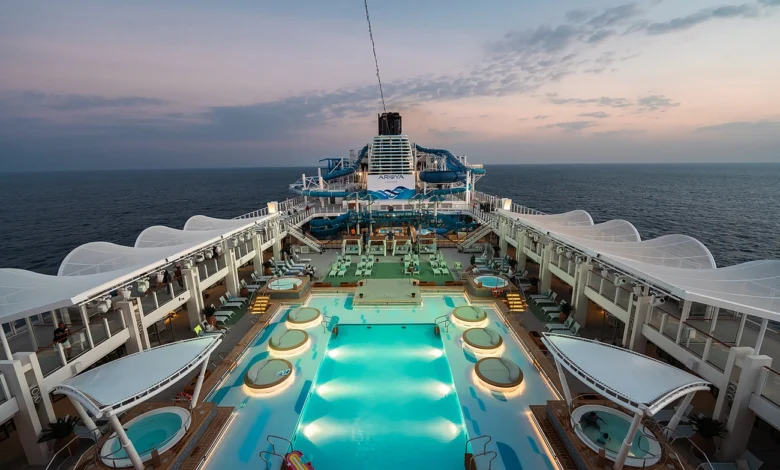
Red Sea Tensions Force Global Cruise Lines From Saudi Portsc
Security concerns in the Red Sea have pushed international cruise lines away from Saudi Arabian ports. These disruptions will likely continue until at least the 2027-28 season. Houthi rebels’ ongoing threats in the region have forced major cruise operators to cancel their Red Sea routes and choose different paths.
Industry experts cite vessel repositioning and safety as the main reasons for the exodus. Most cruise ships changed their routes away from the Red Sea in 2024 and haven’t returned due to geopolitical tensions. TUI Cruises stands out as an exception, as it deepens its commitment to the Middle East cruise market. The company plans to bring 90,000 passengers to the region next year.
Saudi Arabia pushes forward with its tourism vision. Cruise Saudi wants to welcome 1.3 million cruise passengers each year by 2035. The Saudi Red Sea Authority launched the kingdom’s first official regulatory framework for cruise ship operations. This framework lines up with Saudi Arabia’s broader Vision 2030 goals to vary its economy through tourism.
Cruise Lines Suspend Red Sea Routes Amid Security Threats
Image Source: Intueri Consulting
Cruise operators have canceled or changed their Red Sea routes since late 2023 after Iranian-backed Houthi militants in Yemen attacked vessels in the region. Carnival Corporation plans to redirect 12 ships from seven brands that were scheduled to pass through May 2024. These changes will affect the company’s 2024 earnings by 7 to 8 cents per share.
MSC Cruises led the way by canceling three repositioning ‘Grand Voyages’ from South Africa and the UAE to Europe in April. Virgin Voyages also dropped its 2024/25 voyage season plans for Resilient Lady because the risks to safe passage were too high.
Royal Caribbean called off two January voyages that would have sailed from Muscat to Dubai and Dubai to Mumbai. Norwegian Cruise Line made a similar decision to cancel Norwegian Dawn and Norwegian Sky routes planned between October and early December.
Ships now take a longer path around Africa instead of going through the Suez Canal. This detour adds up to two weeks of extra sailing time and costs more money—MSC calculated expenses over AED 183.60 million.
The cruise industry puts passenger safety first. While thousands of travelers have seen their plans changed, experts say these disruptions won’t hurt the multi-billion-dollar cruise industry much in the long run.
Cruise Saudi Maintains Limited Operations Despite Setbacks
Image Source: aroya.com
Cruise Saudi keeps running its flagship brand AROYA Cruises while other international operators stay away from the region due to Red Sea tensions. The company, owned by the Public Investment Fund (PIF), has brought almost 500,000 cruise passengers to Saudi ports since it started operations. However, the numbers have dropped significantly compared to earlier levels.
Lars Clasen, Cruise Saudi’s CEO, points out the decline: “From international cruise lines, the numbers are very low… after the 2022-23 winter season, we had 200,000 passengers, and we’re nowhere near that”. The company has welcomed about 140,000 passengers in its latest operating period.
AROYA Cruises launched in December 2024 and now drives Saudi’s maritime tourism, with routes in both the Red Sea and Mediterranean. The cruise line just wrapped up its first Mediterranean season and carried over 20,000 passengers from Galataport Istanbul.
Saudi Arabia’s local cruise market stays resilient despite regional challenges. The numbers show this clearly – during the country’s first complete cruise season between November and April 2022, local passengers made up 66% of all travelers.
Cruise Saudi talks with international operators about future sailings while pushing toward Vision 2030 tourism goals. The company aims to reach 1.3 million cruise passengers yearly by 2035 and builds strong infrastructure along Saudi Arabia’s coast.
Saudi Arabia Pushes Forward With Vision 2030 Cruise Goals
Image Source: Travel And Tour World
Saudi Arabia has revealed its first detailed regulatory framework for cruise ship operations, which marks a major step forward in its maritime tourism strategy despite ongoing regional instability. Clear standards for safety, environmental protection, licensing, and passenger experience now exist under the Saudi Red Sea Authority (SRSA) regulations.
Cruise Saudi continues to pursue its Vision 2030 targets whatever the current challenges. The company wants to develop 10 cruise destinations by 2030 and draw 1.3 million cruise passengers annually by 2035. This two-year old company, launched as a Public Investment Fund initiative, manages four operational ports: Jeddah and Yanbu on the Red Sea, the private island Saba Beach, and Dammam on the Arabian Gulf.
Saudi Arabia plans to invest 800 billion USD in tourism development over the next decade. The country has already invested 27 billion USD in 2023. The new regulations enforce strict environmental protection measures that include a zero-waste discharge policy and mandatory biofouling management plans.
These initiatives demonstrate Saudi Arabia’s resolve to become a leading global cruise destination, even as international operators temporarily avoid Red Sea routes. The Kingdom’s steadfast dedication to its long-term tourism vision remains strong, as Cruise Saudi’s CEO Lars Clasen announced plans to launch a new cruise later this year recently.
Saudi Arabia stands firm with its cruise tourism goals despite major regional challenges. The Red Sea tensions have forced big international cruise operators to skip Saudi Arabian ports until at least 2027-28. Still, this looks like a temporary setback against Saudi Arabia’s Vision 2030 strategy.
Security threats from Houthi militants have disrupted the usual cruise routes. Ships now need to go around Africa instead of using the Suez Canal. This new route adds extra travel time and costs more for cruise lines to operate. Most international cruise companies put passenger safety first when they decided to change their routes.
AROYA Cruises, the flagship brand of Cruise Saudi, keeps running but with fewer passengers than before the crisis. The company welcomed 140,000 passengers lately, which falls short of the 200,000 from the 2022-23 winter season. Local passengers make up 66% of cruise travelers in peak seasons, which helps keep these operations going.
Saudi Arabia shows its steadfast dedication to maritime tourism by rolling out detailed rules for cruise operations. The country keeps putting billions into tourism facilities along its coastline. Saudi Arabia gets ready for international operators to come back while they stay away for now.
Cruise companies will keep a close eye on how stable the region becomes before they start using Red Sea routes again. Saudi Arabia focuses on making its local tourism better. They work on improving ports, rules, and cruise experiences that match what international visitors expect. The goal of hosting 1.3 million cruise passengers yearly by 2035 depends on how fast regional tensions cool down and international trust builds up in this new cruise destination.





